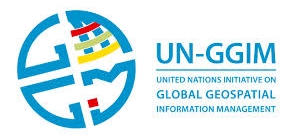

News in 2016
|
The United Nations Committee of Experts on Global Geospatial Information Management (UN-GGIM), in collaboration with the Government of Ethiopia and the United Nations Economic Commission for Africa (UNECA), hosted the Fourth High Level Forum on United Nations Global Geospatial Information Management at UNECA’s Headquarters in Addis Ababa, Ethiopia, from 20-22 April 2016. The event was attended by 301 participants from 57 countries; amongst them 8 ministers and 13 delegates. 7 UN Agencies were represented as well as more than 60 NGOs.

Focus was on land administration and management, with particular emphasis on sharing experiences, including benefits and challenges, considering fit for purpose aspects, digital land registers, cadastres, and other land data needs, demonstrating practical examples of land administration success stories. Land information and its management are recognised as fundamental to successful land administration and the derived benefits to the economies, and overall sustainable development of nations. Therefore, the overarching theme of the Fourth High Level Forum was ‘Good Land Governance for the 2030 Agenda’.
The 1st Expert Group meeting on Land Administration and Management was held as one of the side events. The group of Experts needs to identify the actions that are possible and within its ambit, to support, change, and or solve lingering land administration and management issues particularly as they relate to geospatial information management. The group is chaired by Kees de Zeeuw from The Netherlands and Mahashe Chaka from Lesotho. The context of the Working Group and the Terms of reference were presented. Comments of member contributions have been taken account for in this ToR. The ToR will be presented to the committee of Experts in August 2016. Denise Mckenzie of the Open Geospatial Consortium presented the initiative for a Domain Working group on Land Administration by OGC. The Chair and Co-chair will prepare an first draft of an Action Plan by the End of May. After review by the Working Group members a Draft Action Plan will prepared in June 2016. This will be submitted to the Committee of Experts in August 2016. The participants discussed the issues that should be part of an action plan. The general advice was to narrow down the scope of the action plan, to be pragmatic and to avoid an approach which is too limited to geospatial technology.
Many aspects of ‘land’ are captured within and underpin the 2030 Agenda for Sustainable Development. Specific areas include: poverty alleviation; food security; water and sanitation; gender equality; health lives; sustainable agriculture and production; sustainable cities and human settlements; forests and ecosystems; and land degradation and biodiversity loss. The SDGs, targets and indicators related to land at the global level will be important in order to deliver on better land governance, tenure and land rights at the national and local level. Christiaan Lemmen, representing FIG, brought opening remarks on behalf of the Joint Board of Geospatial Information Societies. He highlighted that a Fit-For-Purpose approach for Land Administration has been developed by global stakeholders. This is a gender sensitive, transparent and highly participatory approach. With the support of geospatial technologies this approach can be implemented quickly. He further stated that the is a clear challenge for the global land community and for the global geospatial information associations: secure land rights for all people, in all places, at all times. The biggest challenge is to keep the information on those land rights up to date and accessible.
The President of the Federal Democratic Republic of Ethiopia, H.E. Dr Mulatu Teshome gave the official opening statement.
After the opening session there was a ministerial segment. And there was high level policy dialogue. Five sessions with high quality and attractive contributions from experts from different disciplines. There was a lot of attention to information and data needs. There are reasons to be optimistic. Geospatial technology is that advanced today that it can be implemented at scale for land administration.
Continued satellite missions during the next decade will provide support the implementation of the SDGs. It can be concluded that imagery is available, GIS tools and infrastructures are available and also conceptual standards are available, approaches are available (Fit-For-Purpose) for all stakeholders. An amazing example of a FFP approach was provided from Sri Lanka: information about 1 mln parcels to be collected in 1 year. Another example: Capacity and political willingness is now the main issue.
The contents of a comprehensive declaration were agreed in the closing session. A key issue is the support to the development of Fit-For-Purpose Land Administration and geospatial information, particularly in developing countries. This information should be authoritative and consistently available. Land Administration concerns both formal and informal people to land relationships. Political awareness has to be advocated and increased. Progress needs to be measured. Standards need to be used – LADM is recognised here. Statistical and geospatial data need to be further integrated.
Christiaan Lemmen
April 2016
26 May 2016